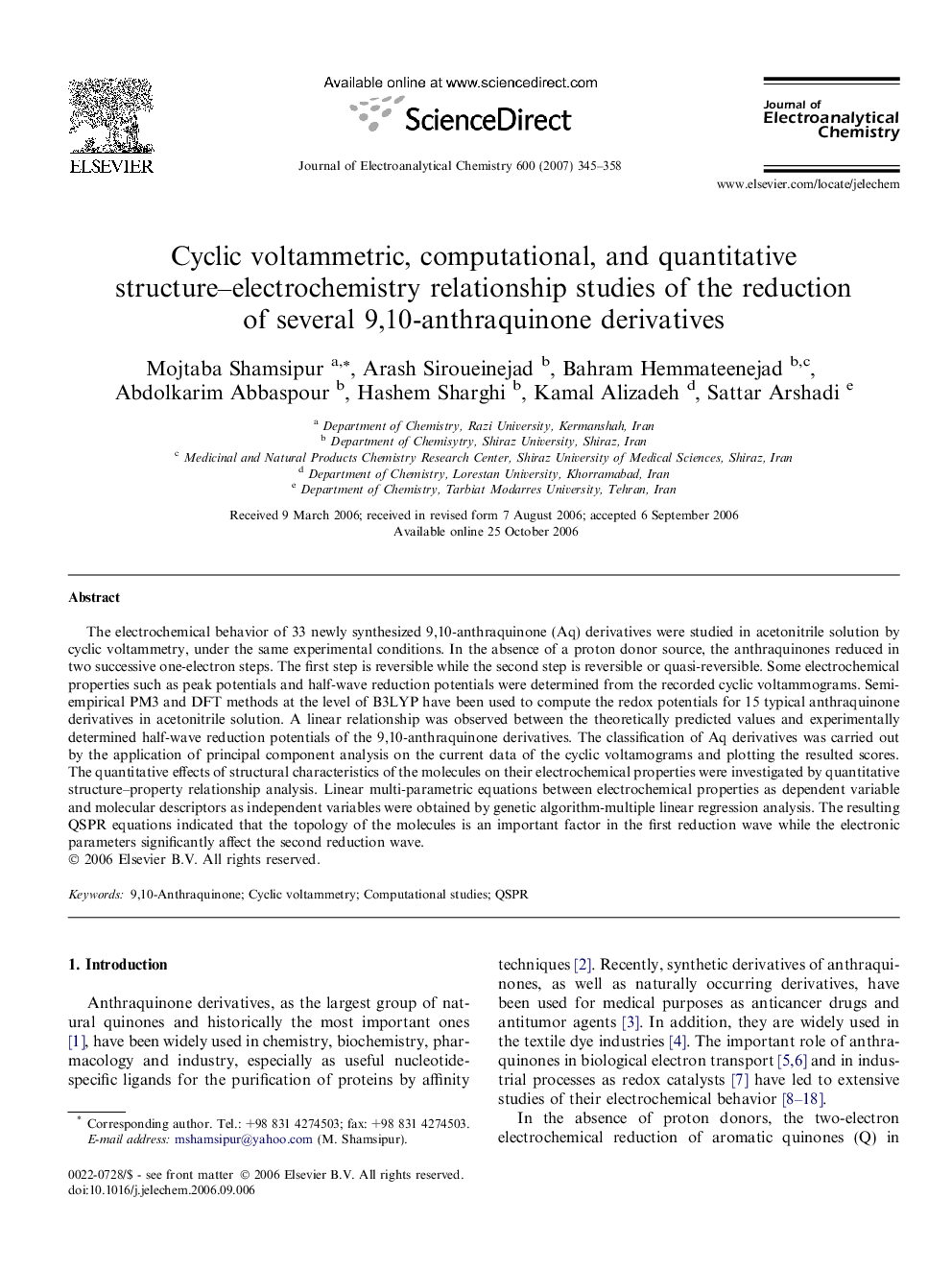| Article ID | Journal | Published Year | Pages | File Type |
|---|---|---|---|---|
| 220910 | Journal of Electroanalytical Chemistry | 2007 | 14 Pages |
The electrochemical behavior of 33 newly synthesized 9,10-anthraquinone (Aq) derivatives were studied in acetonitrile solution by cyclic voltammetry, under the same experimental conditions. In the absence of a proton donor source, the anthraquinones reduced in two successive one-electron steps. The first step is reversible while the second step is reversible or quasi-reversible. Some electrochemical properties such as peak potentials and half-wave reduction potentials were determined from the recorded cyclic voltammograms. Semi-empirical PM3 and DFT methods at the level of B3LYP have been used to compute the redox potentials for 15 typical anthraquinone derivatives in acetonitrile solution. A linear relationship was observed between the theoretically predicted values and experimentally determined half-wave reduction potentials of the 9,10-anthraquinone derivatives. The classification of Aq derivatives was carried out by the application of principal component analysis on the current data of the cyclic voltamograms and plotting the resulted scores. The quantitative effects of structural characteristics of the molecules on their electrochemical properties were investigated by quantitative structure–property relationship analysis. Linear multi-parametric equations between electrochemical properties as dependent variable and molecular descriptors as independent variables were obtained by genetic algorithm-multiple linear regression analysis. The resulting QSPR equations indicated that the topology of the molecules is an important factor in the first reduction wave while the electronic parameters significantly affect the second reduction wave.
